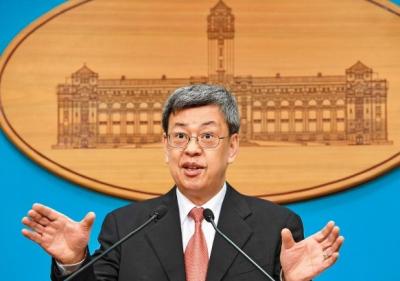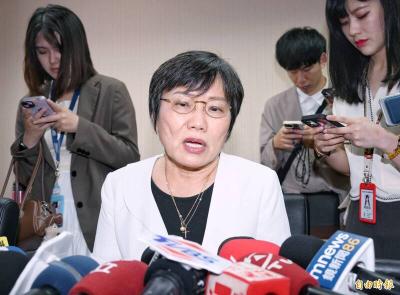Former US missionary Milo Thornberry warned Washington about the danger of a second “conspiracy of silence” sweeping over Taiwan.
Thornberry, who was a central figure in helping human rights leader Peng Ming-min (彭明敏) escape from Taiwan during the years of the White Terror, said “shadows from the past” could be returning.
At a lecture to the George Washington University Taiwan Forum and later as keynote speaker at the Thanksgiving dinner of the Taiwanese Association of Greater Washington on Saturday, Thornberry spoke about his fears for the future.
Thornberry went to Taiwan as a missionary of the Methodist Church at the end of 1965 and over the next few years — as recounted in his recently published book Fireproof Moth — secretly distributed money to the families of political prisoners.
He and his wife also worked to inform the outside world of the torture, the executions and the repression practiced under the Martial Law era regime of Chiang Kai-shek (蔣介石).
In particular, he collaborated with Peng and two former students — Hsieh Tsung-min (謝聰敏) and Wei Ting-chao (魏廷朝) — who were both arrested, “horribly tortured,” tried in a secret court and served long prison terms.
At the time, Taiwan was awash with Americans — missionaries, students, teachers, military and US State Department personnel, businesspeople and tourists — and yet they did almost nothing to stop the White Terror, he said.
Back in the US, Americans did not know what was happening because of what Thornberry called “a conspiracy of silence.”
“There were a few voices who reported the corruption and brutality of Chiang and the Nationalists, but their voices were lost in the deafening crescendo of anti--communism in the US,” Thornberry said.
“Anti-communism justified the US’ decision to look the other way when it came to White Terror,” he said.
There was, he said, a “callous disregard of human rights by our own State Department.”
He said that the “shadows” from the period of martial law had a bearing on the diverging views of Taiwan’s future.
After democratization in Taiwan, none of the officials responsible for the White Terror were brought to account, Thornberry said.
“Since the election of the [President] Ma [Ying-jeou (馬英九)] administration, not much has been heard from it about the period of White Terror,” he added.
“Does the KMT [Chinese Nationalist Party] simply want to forget that period, believing that younger generations who didn’t experience White Terror will not care about it?” he asked.
However, he said, until this past is acknowledged openly and dealt with justly, “I wonder if Taiwan can live into the future without denial.”
“The shadows of the conspiracy of silence also fall on the US government,” he added.
“Some in today’s administration seem little more concerned about the hopes and aspirations of the Taiwanese people than they were during the period of White Terror,” he said.
“Although they knew the reality, they deemed it in the US national interest to disregard the Taiwanese people in favor of Chiang Kai-shek,” Thornberry said.
“Now, I fear that the Taiwanese people’s interests are disregarded because of US interests in China, not to mention the complication of our indebtedness to China. The issues now and then are different, but the readiness to disregard the will of the Taiwanese people is the same,” he said.
Thornberry asked whose side the US was really on.
“Are we on the side of a democratic Taiwan or that of a repressive China? Are we letting China dictate what constitutes stability? Is the past even past?” he asked.
“I believe the struggle for justice will continue in Taiwan in and beyond the elections of Jan. 14, 2012. Unless we choose to be blind, as the citizens of the US were when White Terror reigned, our people and our institutions of government need also to come to terms with our past in Taiwan,” he said.
“That’s no small task,” Thornberry said.

Taiwan would welcome the return of Honduras as a diplomatic ally if its next president decides to make such a move, Minister of Foreign Affairs Lin Chia-lung (林佳龍) said yesterday. “Of course, we would welcome Honduras if they want to restore diplomatic ties with Taiwan after their elections,” Lin said at a meeting of the legislature’s Foreign Affairs and National Defense Committee, when asked to comment on statements made by two of the three Honduran presidential candidates during the presidential campaign in the Central American country. Taiwan is paying close attention to the region as a whole in the wake of a

President William Lai (賴清德) has appointed former vice president Chen Chien-jen (陳建仁) to attend the late Pope Francis’ funeral at the Vatican City on Saturday on his behalf, the Ministry of Foreign Affairs said today. The Holy See announced Francis’ funeral would take place on Saturday at 10am in St Peter’s Square. The ministry expressed condolences over Francis’ passing and said that Chen would represent Taiwan at the funeral and offer condolences in person. Taiwan and the Vatican have a long-standing and close diplomatic relationship, the ministry said. Both sides agreed to have Chen represent Taiwan at the funeral, given his Catholic identity and

Chinese Nationalist Party (KMT) Chairman Eric Chu (朱立倫), spokeswoman Yang Chih-yu (楊智伃) and Legislator Hsieh Lung-chieh (謝龍介) would be summoned by police for questioning for leading an illegal assembly on Thursday evening last week, Minister of the Interior Liu Shyh-fang (劉世芳) said today. The three KMT officials led an assembly outside the Taipei City Prosecutors’ Office, a restricted area where public assembly is not allowed, protesting the questioning of several KMT staff and searches of KMT headquarters and offices in a recall petition forgery case. Chu, Yang and Hsieh are all suspected of contravening the Assembly and Parade Act (集會遊行法) by holding

Lawmakers from the Democratic Progressive Party (DPP) yesterday established a friendship group with their counterparts in Ukraine to promote parliamentary exchanges between the two countries. A ceremony in Taipei for the Taiwan-Ukraine Parliamentary Friendship Association, initiated by DPP Legislator Chen Kuan-ting (陳冠廷), was attended by lawmakers and officials, including Deputy Minister of Foreign Affairs Francois Wu (吳志中) and European Economic and Trade Office in Taiwan Director Lutz Gullner. The increasingly dire situation in Ukraine is a global concern, and Taiwan cannot turn its back when the latter is in need of help, as the two countries share many common values and interests,